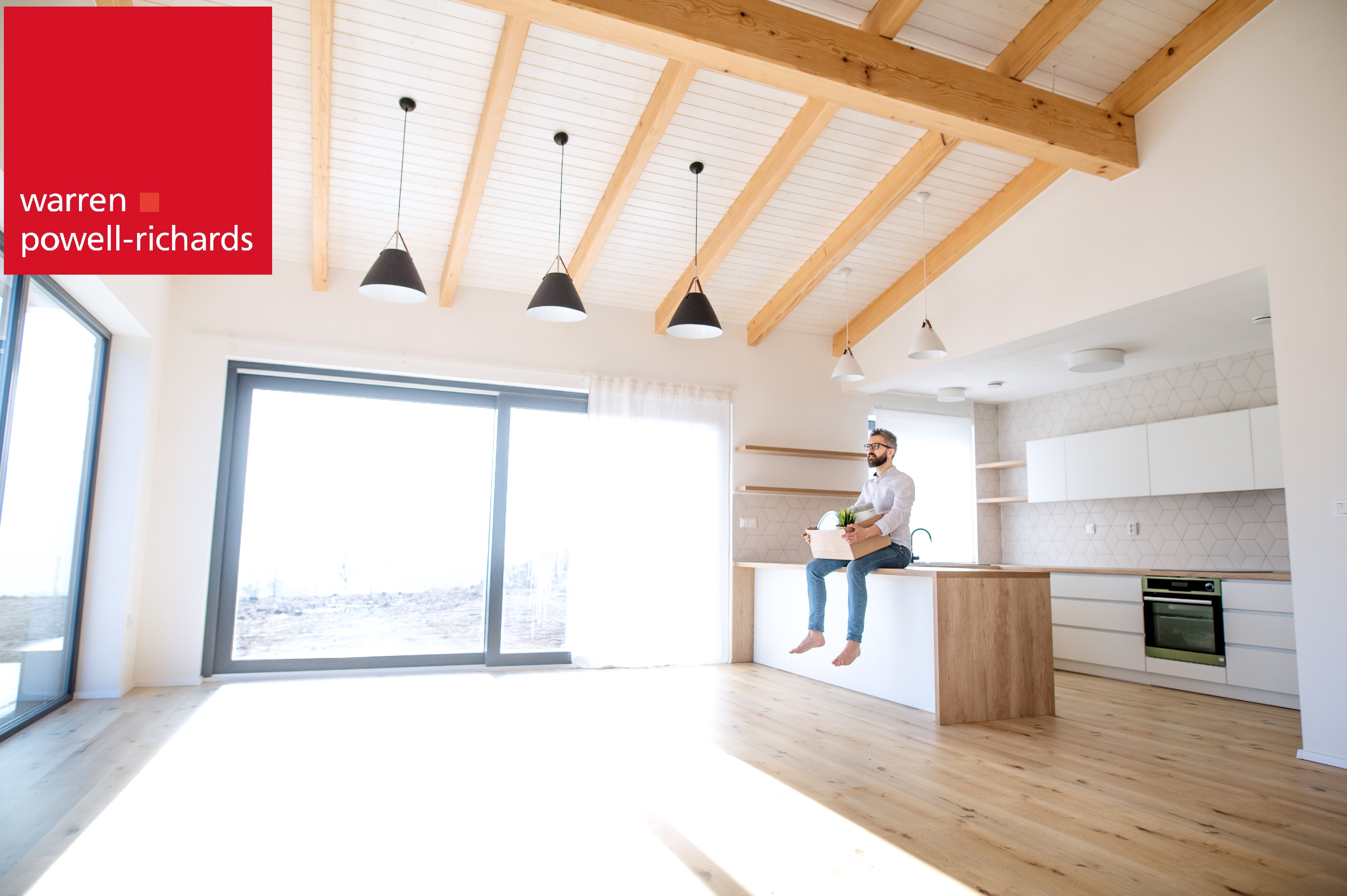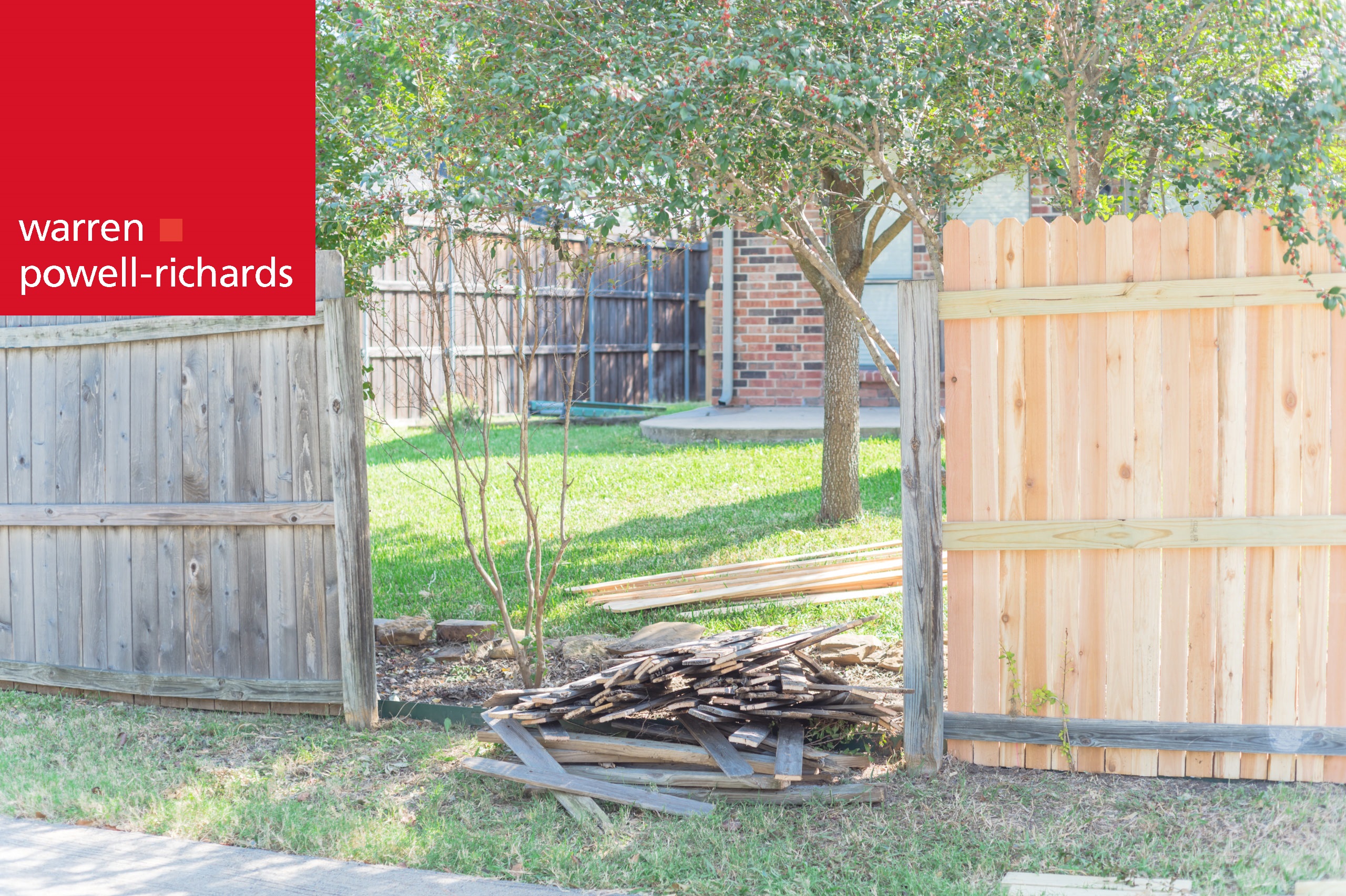Blog
- Details
- Hits: 401
3 Things To Know About Landlord Insurance.

Are you thinking about investing in landlord insurance? While it may not be a legal requirement, you’re leaving yourself open to a huge amount of risk without it.
Here are the most important things you should know about landlord insurance, including what it is and what type of insurance you should get.
What Is Landlord Insurance?
Landlord insurance provides you with protection against the risks associated with renting to tenants. Usually, landlord insurance includes protection against things like damages to the building or contents. But there are other optional policies you can take out, like cover for boiler breakages or missed rent payments.
What Type of Landlord Insurance Should You Get?
There are many different types of landlord insurance available. Each one will cover you for different circumstances. The main types of cover available include:
Building – Covers the repair of structural damage, plus fixtures and fittings, in the event of a fire, storm, flood or other accident.
Contents – Covers damage or theft of furnishings, including things like curtains, carpets, and white goods. This doesn’t include items the tenant owns, as they should have their own tenant’s insurance.
Liability – Covers the costs if you or your tenant is injured on your property.
Rent guarantee – Recovers any missed rent payments by the tenant and any legal fees should you take a tenant to court.
Home emergency – Protects in the event of an emergency, like a boiler, plumbing, security, or pest issue.
Key care – Covers the cost of providing new locks or keys to tenants.
If you’re not sure which type of cover you need, speak to your letting agent for advice or check with your lender.
3 Things To Know About Landlord Insurance
- It’s Different To Home Insurance
Landlord insurance is very different to regular home insurance. If you have home insurance on a property, but you’re renting the space to a tenant, your policy will automatically be void. If you’re not living in the property, basic home insurance won’t provide you with the cover you need as a landlord.
- Some Lenders Mandate It
It’s not a legal requirement to have landlord insurance. But most mortgage lenders will make it mandatory before entering into an agreement with you. If you don’t comply, you could be breaking the terms of your mortgage.
- It’s Tax-Deductible
Just like most landlord expenses, you can usually claim back on the costs of your landlord insurance. Make sure you keep records of payment and notify your accountant (if you have one) about the costs.
- Bulk Discounts Apply
If you rent more than one property, you could get a discount on your landlord insurance. Many providers will offer you a discount if you choose to arrange your insurance for all buildings on a bulk policy.
Rent With Confidence
At Warren Powell-Richards, we can help you rent with the confidence and security you need.
For more advice on landlord insurance and property management services, get in touch with us today or via email at This email address is being protected from spambots. You need JavaScript enabled to view it..
- Details
- Hits: 310
Are Your Tenants Going On Holiday? Here Are 4 Ways to Protect Your Property

Getting a text from your tenant saying, ‘I’m going on holiday!’, can fill many landlords with a sense of dread.
Almost half of all UK burglaries happen when a property is empty. If your tenant is going on holiday, whatever time of year it is, and particularly on a long trip, here are four ways to protect your property while it’s empty.
- Check the Locks
Of course, your tenants will know they need to lock the front door before they go on holiday. But since a worrying number of break-ins happen via an unlocked door, it’s a good idea to remind your tenants before they leave or even check yourself that the doors are locked.
Since it’s also common for a burglar to break in via an unlocked window, make sure your tenants have the keys for everything, including all windows, side gates and sheds. Ask them to lock everything that needs locking before they go on holiday and to let you know if a lock isn’t in a good condition.
- Review Your Insurance
Having landlord insurance is a great way to protect yourself against many different rent-related issues, including break-ins. But some insurers won’t cover you if the property is empty for a long period (which is usually considered more than 14 days). Plus, some companies require you to notify them whenever your tenants go on holiday.
Make sure you check your policy before your tenants go on their trip and consider upgrading if you’re not insured for the duration they’re away.
- Increase Security
A property with good security is well known for being more attractive to tenants. If you’re worried about break-ins, consider ramping up your security measures.
Outdoor security lights, visual burglar alarms and smart home cameras are all great deterrents that can help protect your property while your tenant is on holiday. They can sometimes even decrease your insurance premiums, which is a bonus!
- Provide a Checklist
One of the best things you can do to help your tenants prepare for their trip is to provide them with a pre-holiday checklist. Include everything you need them to do before they leave, like locking all windows and notifying you of any faulty locks.
More often than not, your tenants will find a checklist of must-do’s helpful. Plus, it can give you the peace of mind that everything’s been done.
Are You a Landlord That Needs More Renting Advice?
Protecting yourself as a landlord is always important, especially when your tenants go on holiday and the property is left empty.
For more advice on how to protect your property, Warren Powell-Richards are your local experts in the rental market. If you want to make renting easier, give us a call or email us at This email address is being protected from spambots. You need JavaScript enabled to view it. for a chat with our friendly team.
- Details
- Hits: 343
Landlords: Should You Let Tenants Decorate? 5 Things to Consider

Since the number of people renting long-term is growing, more tenants are finding themselves wanting to ditch the plain décor and make a rental feel more like home. But letting your tenants decorate a rental property is a relatively new concept for many landlords.
As a landlord, knowing how to respond to the decorating trend is tricky. There are downsides to letting your tenants decorate, but there are many benefits, too.
If you are considering whether you should let your tenants decorate, here is our advice on what the benefits are and how you can safely allow decorating.
Benefits of Letting Your Tenants Decorate
Letting your tenants decorate shouldn’t always be met with a feeling of fear and dread. At Warren Powell-Richards, we find that allowing your tenants to decorate can have its benefits, including in terms of:
- Marketability
The number of people renting long-term is growing, so more and more tenants are looking for somewhere they can make a home. Depending on who your target market is, allowing your tenants to decorate a rental can easily make it more attractive to long-term renters. And long-term renters are the goal for many landlords.
- Return on Investment
Decorating costs money. Even if your tenants are only buying a tin of paint or a few rolls of wallpaper, that can still be a few hundred pounds they’re spending on your property. Not only can this mean your property stays looking fresh, but you could even see a better return on investment for it.
Plus, if your tenants want to spend money on your property, it’s a good sign. It means they take pride in living in your rental and want to look after it as best they can.
How to Safely Let Tenants Decorate
- Set Boundaries
Stipulate very clearly in the tenancy agreements what you will and won’t allow. For example, you’re happy for them to paint, but they can’t rip down any walls. Or they can put up shelves and units as long as they fill in the holes afterwards.
Setting boundaries around letting your tenants decorate means you can retain a level of control over what happens with the property. This puts you in a better position if you need to re-market it in the future.
- Discuss Plans Before Moving In
If you have a new tenant moving into your property, it doesn’t do any harm to ask them if they have plans to decorate.
Getting a feel for their style and what your tenant wants to do to the property can help reassure you that you’re not going to end up with a bad paint job or something you’d consider distasteful. It can also help you make up your mind about whether you want to let them decorate or not.
- Take Pictures
Taking pictures of the property and undertaking an inventory before a new tenant moves in is an essential part of the onboarding process – whether you plan on letting tenants decorate or not.
If you’re allowing tenants to decorate, taking pictures is especially important. Not only will you have a record of how the property used to look (in case you want to change it back to how it was afterwards), but you can also check during inspections that the tenants haven’t renovated outside of the boundaries you set.
Need More Landlord Advice?
Warren Powell-Richards are your local property experts. If you want more advice on how to manage your property, give our friendly team of letting agents a call today or send us an email at This email address is being protected from spambots. You need JavaScript enabled to view it. to learn more about what tenants want from you.
- Details
- Hits: 396
Should You Let a Property Furnished or Unfurnished?

Are you in the midst of deciding whether you should let your property furnished or unfurnished? Many factors come into play when making the decision, like the location, target market, and your return-on-investment goals.
If you’re on the fence about letting a property furnished or unfurnished, here’s an overview of the pros and cons to help you decide.
What Does Furnished Include?
As a minimum, all properties let in the UK need to include various amenities, like white goods, kitchen and bathroom fixtures, flooring, and curtains or blinds.
While there isn’t a legal definition of what a furnished property includes, it needs to be considered ‘fit to be lived in’ from the day the letting begins. This usually means it has:
Beds: Enough for each bedroom
Wardrobes: Appropriate for the number of bedrooms and people
Chest of drawers: One or two sets per bedroom
Sofas: Ideally to seat the number of people living at the property
Dining room table and chairs: Preferably with enough chairs to seat the number of people living at the property
Tableware: Enough to cater to the number of people living at the property
What are the Benefits of Letting a Property Furnished?
Choosing to let a property furnished ultimately depends on the target market, the local area and your desired rent price. By letting a property furnished, you can:
Get a better or higher rent price
Make your property more attractive
Attract short-term tenants
Are there Downsides to Letting a Property Furnished?
Despite the benefits, there are some downsides to letting your property furnished, including:
Size of market: A furnished property doesn’t always attract long-term tenants, so you may appeal to a smaller market seeking short-term lets.
Maintenance: It adds maintenance, like handling repair and replacement work.
Costs: You’ll need to pay for the furniture, plus repair and disposal costs.
What Does Unfurnished Include?
Unlike furnished properties, there is a legal definition of what an unfurnished property includes. They must have a minimum of:
White goods, including a cooker, fridge, freezer and washing machine
Kitchen and bathroom fixtures
Flooring or carpets
Curtains or blinds
What are the Benefits of Letting a Property Unfurnished?
Even though furnished properties are usually more desirable, there are some benefits to letting a property unfurnished, including:
Less maintenance: Furnished properties come with a requirement to maintain the furnishings. With an unfurnished property, you won’t have this responsibility.
Attract long-term tenants: Long-term tenants often bring their own furniture to a rental, so an unfurnished property could be more desirable to this market.
Cheaper: Since you won’t have to pay for furniture, your outlay and running costs could be cheaper.
Are there Downsides to Letting a Property Unfurnished?
Naturally, unfurnished properties attract a different clientele. Letting an unfurnished property can mean you need to charge a lower rent price. Plus, you may not be able to compete with other nearby rentals if you’re not providing what people want. The best thing to do is research what works well for your property type in the local area before you decide.
Landlords: Need Advice?
Deciding whether to let your property furnished or unfurnished depends on many things, particularly related to the market in your area.
For personalised advice about letting properties, our friendly team at Warren Powell-Richards are here to help. Give us a call today or email us at This email address is being protected from spambots. You need JavaScript enabled to view it..
- Details
- Hits: 411
What is the Boundary of my Property and How do I Find it?

Do you know where your boundaries are for your property? And, do you know which boundaries you are responsible for?
There are many myths surrounding boundaries and responsibilities, so we’ve put together this short guide to help you understand where your property boundary is – or if you don’t, knowing how to find it!
Is it important to know my boundaries?
Sometimes it’s easy to spot exactly where your property boundary is. Chances are, there will be a fence or a hedge or some other structure that helps define the boundary.
But that is not always the case. It might be that the boundary is overgrown, or there is no definitive boundary to be seen. There could even be not-so-neighbourly disputes that occur about trees planted on a boundary for example, with one side saying the other has to sort things out and the other side are in disagreement. That’s why it’s important to understand boundaries! Not to mention the fact that it’s useful to know exactly what’s yours!
Will the title deed of a property tell me about my boundary?
Actually, while you would have thought so, it’s not always the case – but it’s a good place to start.
If you look at the Government website, it’ll tell you that to find out about boundaries, you need to look at the Land Registry website and find the title plans. The Land Registry is where ownership of land is registered, and the title plan outlines the land in question.
The website states: “Most title plans don’t show exact boundaries”, however, this is not a huge issue as the website goes on to state that “you usually don’t need to have the exact boundaries recorded anywhere”.
So, I can make an agreement with a neighbour about my boundaries?
Yes, you can make an agreement with a neighbour which is handy because between you there can then be no dispute as to which bit of land is yours and what you are responsible for.
You can do this informally, or you can apply to have it officially registered. There is a process to go through and certain details are required. It’s best to seek formal legal advice on matters like this.
Is it right that the rule is that I’m responsible for the left-hand side of a property boundary?
This is something many people believe to be true but it’s not! There is, in fact, no legal basis to this. Some people, even solicitors, will say that a red line on a title deed marks the boundaries, and therefore responsibilities, but this is not always the case either.
As the Land Registry says, it’s just the general boundary.
The red line will fall within the boundary, but in the case of a dispute, it is the courts that will decide.
What if my boundary is obviously marked by a fence and trees?
If you plant a hedge or a tree, what happens when it grows so wide that the original boundary becomes obscured? You may have a fence installed – but does it run along the boundary or is it just inside?
It’s fair to say that you should not assume anything as boundaries can become blurred over time.
How can I find out where my boundary is for sure?
There is a document called a Title Plan. On that plan, which goes right back to when the land was originally developed and sold, there will be a boundary mark, and on it will be a shape like the capital letter T.
Where the top of the T falls, it is the owner of that land that has a particular responsibility. But, again, be careful. Just because you have responsibility does not necessarily mean you have ownership!
Are boundaries really this confusing?
It’s clear that the rules on boundaries aren’t always crystal clear. But, you will need the information when you are ready to sell your property.
Your conveyancer will definitely want to know about boundaries and responsibilities because the Land Registry will need to know who owns what and where. And of course, you and your buyer will want to know for sure too.
A conveyancer will likely ask if the boundaries are your understanding. So, if you’re thinking about moving home, we suggest that you gather all the paperwork regarding boundaries together in good time so that it can be presented to the conveyancers. If there are any issues with land ownership and boundary lines, they are the ones who will ask the questions and raise enquiries.
While boundaries are not an issue for the majority of home movers, they can become a legal minefield for others and it’s easy to see why neighbourly disputes can occur.
If you have any questions, please do get in touch. Warren Powell-Richards are your local property experts. Call us or email This email address is being protected from spambots. You need JavaScript enabled to view it. to see how we can help.





ALTON | FARNHAM | GODALMING | GRAYSHOTT | HASLEMERE | LONDON